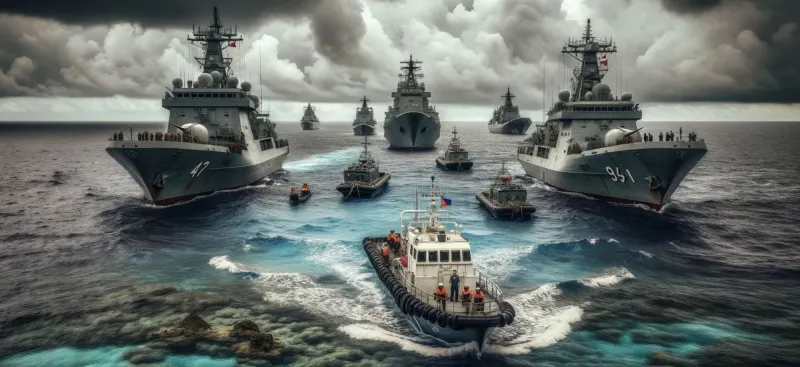
Introduction
For the last 75 years, Beijing has been on a slow, methodical march south through the South China Sea (SCS). This second “Long March” has seen China take de facto control of the SCS. In doing so, China has flouted international maritime law and, more routinely as of late, dangerously and violently attacked vessels of other regional states such as the Philippines.
Manila has drawn the ire of the Chinese president (in reality, dictator), Xi Jinping, as it has embarked on a campaign to expose the Chinese harassment and unprofessional maritime conduct. The most recent bone of contention is the revelation of Chinese survey crews and evidence of dredging at Escoda Shoal, which lies about 100 miles from the Philippine Island of Palawan. China, of course, vigorously denies any work occurring at Escoda Shoal. Nonetheless, will this be a redline for Manila?
The Central Importance of Escoda Shoal
Escoda Shoal is of vital importance to Manila for two primary reasons. First, it is the jumping-off point for supply runs to the grounded BRP (Philippine Navy) Sierra Madre, an intentionally grounded, World War II tank-landing ship housing Philippine Marines. The BRP Sierra Madre’s presence maintains the Philippine government’s claim to its portion of the Spratley Islands. China urgently desires to cut off support for the Sierra Madre and further strengthen its false claim to ownership of the SCS.
Second, were China to turn Escoda Shoal into another military outpost, it will be able to increase naval and coast guard presence at Reed Bank. This location is rich in oil and gas and has the potential to supply the Philippines with energy for the next 75 years. Currently, the Malampaya gas field is (and has been for 25 years) a primary source of gas for the Philippines. However, Reed Bank is two to three times larger (GMA Integrated News, 2024). Thus, the loss of access to Reed Bank is directly tied to the loss of energy security for Manila.
Evidence of Chinese Activity
Escoda Shoal, lying approximately 90 to 100 miles from the Philippine island of Palawan, is showing telltale signs of activity that display China’s desire to develop the maritime feature into a new outpost. According to Philippine Coast Guard officials, crushed coral has been observed in sufficient amounts to alter the elevation of the sandbars at the shoal (McCartney, 2024). Leveling the shoal would precede the construction of military-related infrastructure. In addition to the crushed coral, three Chinese vessels have been observed circling the shoal as well. Two of these ships are research vessels used to deploy smaller service boats that carry divers and equipment to survey the seabed (Robson, 2024).
Moving Forward
Manila currently claims nine maritime features, ranging from islands to atolls, that they have occupied from the 1970s to today. These are features that the Manila government must firmly assert its sovereignty over, or risk losing them to the rapacious Communist Chinese government.
Fortunately, the way forward is clear: Manila, must begin reinforcing its presence on all of its maritime claims with military or law-enforcement infrastructure. They have begun such activity on Thitu Island, and this must serve as a new pattern of behavior and vigilance.
